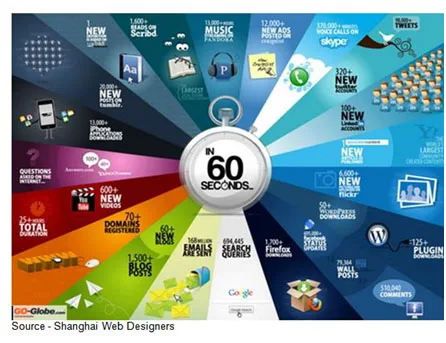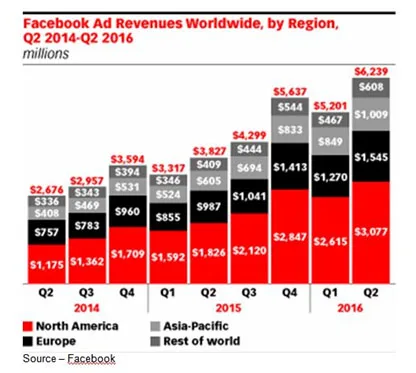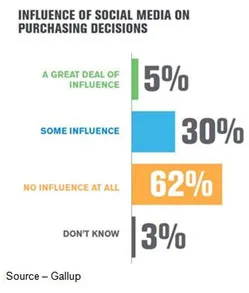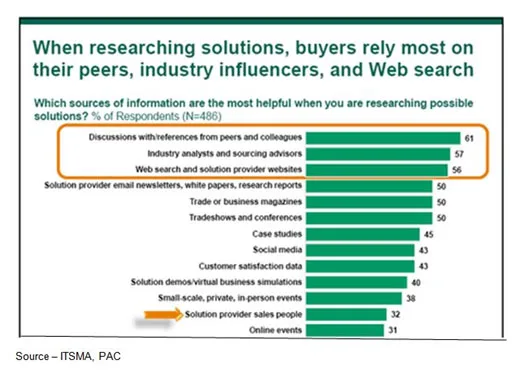Social Media is the Customers’ Domain, Not Marketing’s

If Tim Berners-Lee, often called the inventor of the World Wide Web, had known that his development of HTTP (Hypertext Transfer Protocol) back in 1989 would become a huge, unrelenting ad hose, he might have changed his mind about releasing it on humanity.
Okay, you can’t credit/blame him for all of it.
Someone had to develop the search engine and the BBS (Bulletin Board System) which evolved into social media sites like LinkedIn, Facebook, Twitter, Yelp, Tumblr, Instagram, ad nauseam.
Nearly all of the 3.5B people on the Net worldwide are busy on at least one of the social media sites.

That’s why, every day:
- Facebook users post 4.75 billion items of content
- Twitter users send 400 million tweets
- Instagram users “like” 1.2 billion photos
- YouTube users watch 4 billion videos
With all that action, it’s no wonder that marketing folks believe what the site folks tell them social media has:
- revolutionized the way customers engage brands
- changed how brands influence behaviors
- become one of the best marketing tools our world has ever known
- evolved to be extremely influential
- become a huge necessity for business
- become an extremely effective way of getting your brand in front of 100s/1000s of people every day; lots of potential customers
- proven to be the most inexpensive form of digital marketing that requires only minimal know-how and experience – and it shows – over time
As a result, the programmatic ad bot servers contend that because of this, your brand has stronger market presence.
And since 91 percent of brands are using more than one social media platform, it’s not something where you want to fall behind.
Sorta’ makes you feel if you don’t have an all-in social media marketing/ad effort, you’re not even doing real marketing.

Don’t get me wrong, I’m not against social media marketing; but the first step isn’t to stuff as many ad dollars as possible into Zuck’s money machine.
Even if you build a strong following on any of the sites, remember they are the site’s potential customers … not yours!
They may follow you but Facebook, LinkedIn, Instagram and the others have their name, email address and control what they see from you … which is all Zuck really wants anyway.
After all, according to BIA/Kelsey, U.S. firms spent $5.1B on social media as of two years ago and by 2018, they expect that to grow to nearly $15B.
eMarketer estimated that Facebook will take 64.8% of total social network ad spending worldwide.
That’s probably why ad blockers and Facebook are trading punches to keep ads visible/out of your company and personal Facebook page.
It’s nothing personal.
Actually, it Is
People don’t visit social media sites to engage with brands but to interact with people they know personally and professionally.

A recent Gallup study found that the vast majority (94 percent) of folks who use Facebook and the other locations do it to connect with friends, family.
They found that people were far less interested in learning about companies and products.
It’s true, consumers have always talked about what they like and don’t like; and social media gives them a platform to take that discussion more public and on a global scale … instantly.
The problem is many companies and their marketing people treat social media as a one-way communications tool. You know, a tool for pushing their marketing agendas.
Unfortunately, most of the folks on the social media sites don’t agree.
Or, as Gallup concluded, “Social media are not the powerful and persuasive marketing force many companies hoped they would be.”

The ubiquitous availability of information on the Web means they control the information … pricing, availability, competitive advantage, quality of products and service/suppor t. It means he/she is better equipped to make the right decision the first time.
Then they check with friends, family and user comment locations before they visit the store or web site.
But don’t throw in the towel.
Instead, shift your social medial efforts to what delivers the best marketing return … customer satisfaction–especially from your strongest, most visible/vocal and most committed customers.
They’re the people others go to for ideas, recommendations. The folks others listen to.

As Gallup recommended, ““Customer engagement drives social engagement — the degree to which consumers will work for or against an organization within their social networks — not the other way around.”
Always keep in mind that social media is highly personal and conversational. It’s no place for a sales pitch.
While social media can’t be used to qualify/quantify likes and followers, it should be used to strengthen relationships with existing customers and assisting new customers…seamlessly.
Accent Marketing found that 72 percent of customers not only want to interact with brands using social media but also obtain assistance.
Because social media is open 24×7, many customers (75 percent millennials, 55 percent baby boomers) find it helpful to get answers to questions from other customers as well as company representatives.
The company has to monitor, listen and be available to answer questions as well as respond to complaints and criticisms. Ignoring negative feedback is counterproductive and can only hurt your reputation.
After all, if you want new customers; the best way to do it is to take care of your existing customers.
Keep in mind, social media enables people to message, comment, vote, blog, share, like, pin, tweet and see peer-curated content.

It also allows marketing to listen, respond, test, crowd source, connect and engage with people who are their most valuable resource…customers.
Social media marketing isn’t what it used to be, the landscape has changed … significantly.
Management needs to approach it with a clear sense of purpose that aligns with company goals, objectives; and most of all, the customers.
 If firms don’t, they will hear from customers and Perseus who said, “Someday, someone was gonna have to say enough! This could be that day. Trust your senses. And don’t look this b**** in the eye.”
If firms don’t, they will hear from customers and Perseus who said, “Someday, someone was gonna have to say enough! This could be that day. Trust your senses. And don’t look this b**** in the eye.”
# # #